What's inside
It’s the pinnacle of the health and fitness world – the mythical ‘ripped’ status.
When we think of someone being ripped or shredded, we picture someone with well-developed muscle mass and lean body fat to show it all off.
Abs, vascularity, and muscle definition are some of the features of a ripped physique.
But for the average person, how long does it take to achieve a body like this?
This article aims to answer just that, with a bunch of useful tips and advice along the way!
How long does it take to get ripped?
Related: What is The 75 Hard Challenge
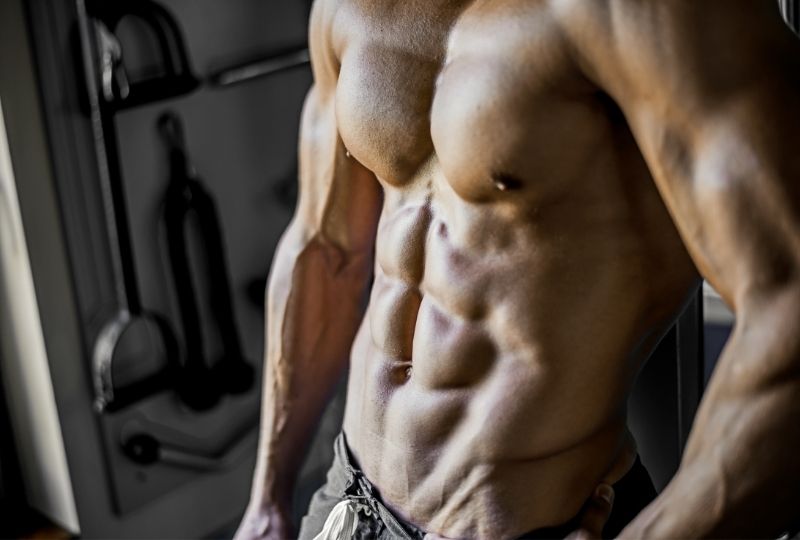
Determining how long it takes to get ripped requires a couple of key pieces of information.
First, let’s define ‘ripped’ as a body fat percentage in the ‘good’ to ‘excellent’ range as defined in the ACSM Physical Fitness Assessment Manual:
| Demographic | Excellent BF% | Good BF% |
| Men 20-29 | 7.1-9.3% | 9.4-14% |
| Men 30-39 | 11.3-13.8% | 13.9-17.4% |
| Women 20-29 | 14.5-17% | 12.5-17.9% |
| Women 30-39 | 17.1-20.5% | 18-21.5% |
Next, let’s assume a rate of weight loss (with minimal muscle loss) of 0.5-2 lbs. per week.
Then, it’s simply a matter of determining how much weight you need to lose to get into the appropriate body fat percentage category.
For example, a 175 lb. (77kg) man in his 20s at 18% BF, or around 30 lbs. fat mass.
If he loses around 8 lbs. of fat, he’d be closer to 13% BF putting him in the ‘ripped’ category.
At the rate mentioned above, this would take this individual four to 16 weeks of dieting and training.
All this includes assumptions around losing only fat and no lean mass, that the individual has sufficient muscle mass to begin with, and more.
So, the short answer is – it depends!
12 Steps for Getting Shredded Fast
Related: 13 Best Fat Burners for Women
This list will provide you with the foundation needed to start your journey to getting a ripped physique.
The tips are divided into different sections, based on the eating, training, recovery, and goal setting you’ll need to get shredded as quickly as possible.
Eating to Get Ripped
When we think of someone with a ripped physique, they are muscular, sure.
But the thing that really stands out when someone is shredded is their leanness, exposing that muscle, the abdominals, and even the veins.
To get to this point, it’s necessary for most people to cut down on body fat.
While exercise will play an important role in this process, it’s the diet that will lay the foundation for a successful cut.
These first several tips will show you the steps for dialing in your nutrition to get your inner fat-burning furnace fired up.
1. Cap the Calories

The most important thing to do when cutting down body fat is to reduce the calories you consume.
This can be done in any number of ways, including but not limited to:
- Decreasing fat intake
- Reducing carbohydrate intake
- Eliminating sweets
- Limiting alcohol consumption
- Intermittent fasting
- Low-calorie foods
- Portion control
- Increasing fruits and vegetables
- Meal replacements
- Cutting out snacks
Choosing one (or more) of these options will be a great start and should lead to initial weight loss.
To get the most bang for your buck, pick something you know will have the biggest impact on your overall calorie intake.
For example, if you’re a sweet tooth, try to find low-sugar versions of your favorite foods, cut them out, or try to replace them with fruits or other low-calorie alternatives.
If you can implement a few of these changes and are seeing progress, just stick to what’s working.
See further sections below for what to do if you’re trying these methods but aren’t making progress on the scales.
2. Provide Protein
Once you’ve kicked off the weight loss process, the next most important consideration for diet is to maintain as much muscle as possible.
After all, if you lose all your muscle along with the body fat, you won’t be ‘ripped’, just skinny.
If you’re a beginner, you may even be able to add some lean muscle while losing body fat at the same time.
Either way, consuming adequate dietary protein to support your muscle tissue is key to achieving a shredded physique.
But how much protein is enough? There are many opinions about this topic out there, and you may have heard different numbers from different sources.
The ACSM recommends that for general health, you should consume about 0.35 grams of protein per pound of body weight (0.8g per kilogram for metric system users).
However, this amount may not be enough for those looking to support weight training, or for older adults.
The same ACSM guide recommends 0.5-0.8g/lb (1.2-1.7g/kg) to maintain a net positive protein balance for those training for muscle mass.
Professional bodybuilders take this even further, with one study showing their protein intake ranged from 0.8g to a whopping 1.9g/lb (1.9-4.3g/kg).
The average protein intake in this study was just over one gram of protein per pound of body weight (2.4g/kg).
The best place to start for beginners who haven’t been tracking protein would be to begin with the ACSM guideline for resistance training, then increase if needed.
3. Manage Macros
Once you have your protein sorted, you can make up the rest of your daily calories with a mix of carbohydrates and fats.
Both low carb and low fat diets have been used to lose weight, and as long as overall calories are in a deficit, you can have any mix of both.
As you can see in the graphs below, reducing either carbs or fats will reduce overall calories, or you can reduce both.
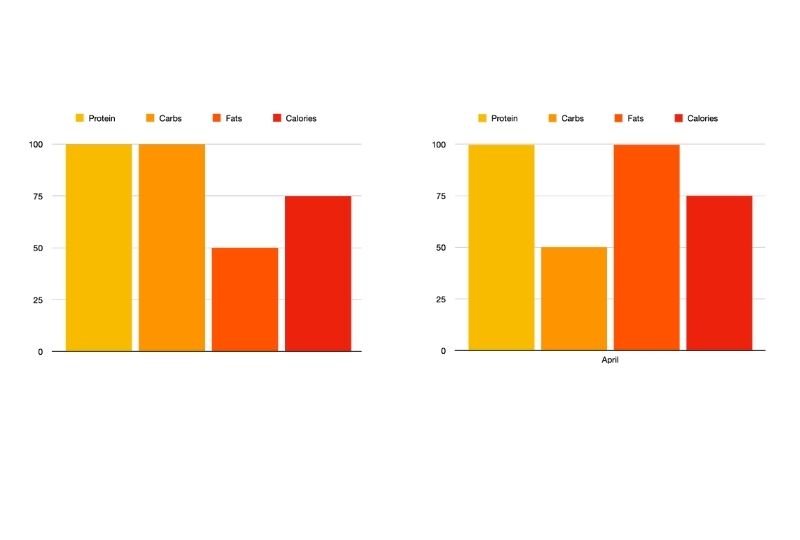
Fats are more satiating and help you feel full. However, they are more calorie-dense at nine calories per gram.
Carbohydrates are only around four calories per gram, but we all know it’s easy to get carried away eating high-carb foods.
Certain amounts of carbs and fats are necessary for energy, recovery, and good health. Try to reduce the less healthy sources, like saturated fats and sugars.
The best sources of carbs and fats are foods like vegetables, fruits, whole grains, nuts, avocados, and seafood.
Experiment and find the best combination of macros that gets you results while also keeping you satisfied.
4. More Micronutrients
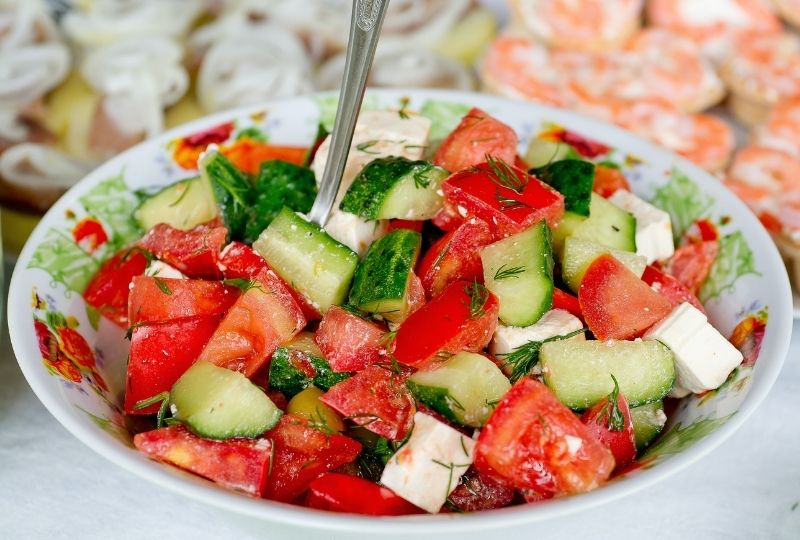
After coming up with a good mix of protein, carbs, and fats to support your cut, it’s important to ensure you’re getting all the micronutrients as well.
While vitamins, minerals, and other trace elements might not seem important for getting ripped, they can play a critical role.
Micronutrients like water and fat-soluble vitamins support many metabolic processes that help support your training and recovery.
The best way to get sufficient amounts of everything you need to function optimally is with a balance of whole foods in the diet.
The Australian guide to healthy eating is just one example showing the recommended sources and amounts of these vital substances.
While vitamin and mineral supplements are available, it is preferable to get everything you can from real food, then make up the rest when necessary.
5. Help with hydration
Proper fluid intake is an often overlooked aspect when it comes to getting in amazing shape.
Being properly hydrated is critical when it comes to optimizing your performance in the gym.
Drinking things like water, coffee, tea, and low or zero-calorie drinks also helps keep you feeling full, stopping you from eating when you may just be thirsty.
Make sure you take hydration into consideration around your training, with things like having a drink bottle available, training in a cool environment, and taking regular water breaks.
Getting the recommended eight cups of water a day isn’t hard to plan into your routine.
For example, a glass of water upon waking, two coffees, water with each meal, and water or milk in a protein shake would hit your daily requirement.
Water weight and purposeful dehydration come into play for professional bodybuilders during the final stages of contest prep.
However, this is best left to the professional athletes and coaches, and can be dangerous.
These techniques aren’t necessary for you to get ripped and looking lean and muscular.
Training to Get Ripped
Related: Bro Split Vs PPL
Now we’ve covered what goes in the body to get a ripped physique, let’s turn our attention to the fun part – training!
With the body fat melting off, the gym is where you’ll build and maintain shaped and solid muscles to show off underneath.
Exercise has another important role in building a ripped body – helping you to create a greater calorie deficit through cardiovascular work.
6. Maintain muscle
Related: Does Cardio Burn Muscle?
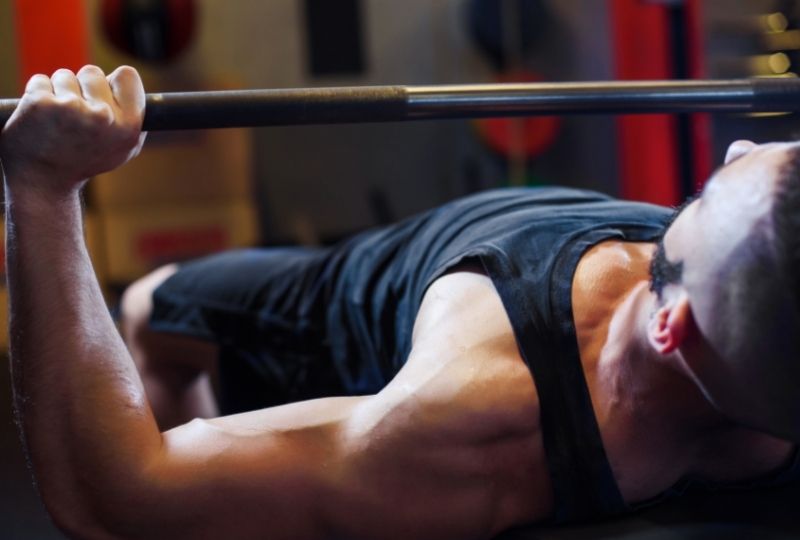
As mentioned, having a ripped body doesn’t just mean having low body fat.
For most people looking to get ripped, the trick is to reduce fat mass while maintaining as much lean tissue – including muscle – as possible.
This means resistance training to stimulate muscle protein synthesis, eating enough protein, and not cutting too aggressively.
Research supports this. There is a study between two groups where both lost an average of 20 lbs. (8-9kg).
One group lost the weight over 12 weeks, while another used a very aggressive diet to lose the weight in just five weeks.
However, while the weight loss was the same, the lean mass lost in the rapid weight loss group was over six times higher than the 12-week group.
This has implications not only for not looking as good with muscle mass lost but also for weight regain.
As for what resistance training to do to keep (and grow) your muscles while getting lean, there are many options.
There are several workout examples in this article. Also, check out our ultimate guide to 3-day split routines for more ideas.
7. Cut with cardio
Related: Does Flexing Build Muscle?
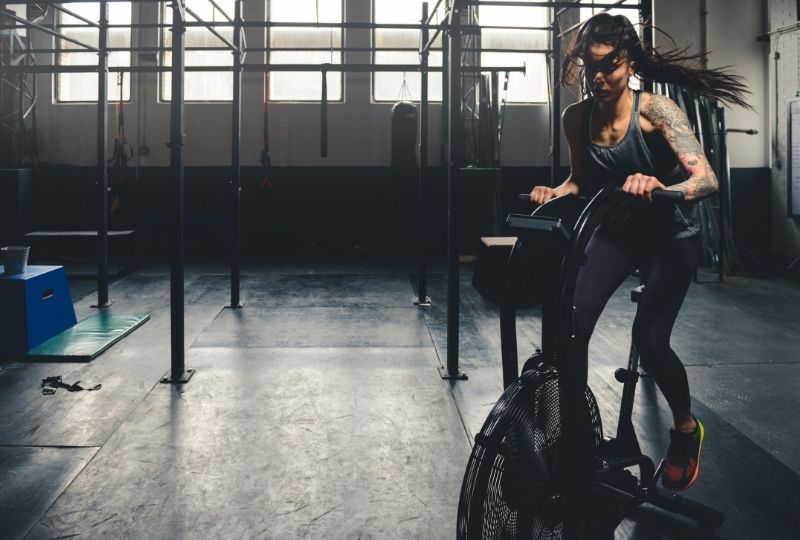
In addition to your weights program, you’ll need to spend a decent amount of time in the gym doing cardio if you want to get ripped faster.
Research shows that while overweight individuals can lose weight with dietary restriction alone, a combination of diet with exercise has the best results.
The ACSM recommends a minimum of 150 minutes of moderate aerobic activity a week.
If you’re really looking to accelerate your fat loss, however, you might want to be closer to 300 minutes a week.
The following table shows a breakdown of how many minutes of cardio are required to meet this goal with different frequencies of training:
| Days per week | Mins per session |
| 3x | 50 – 90 mins |
| 4x | 40 – 70 mins |
| 5x | 30 – 60 mins |
| 7x | 20 – 40 mins |
As you can see, doing cardio on most days will help you get those calories burned without living on a treadmill.
Speaking of treadmills, check out our article on which cardio machines burn the most calories to make the most of your minutes!
You can meet this target after your resistance training sessions, on your off days, or anytime in between.
Activities like sports, hiking with friends or walking the dog can rack up minutes while being good for your mental health, too.
Recovery to Get Ripped
With the kitchen and the gym covered, let’s look at everything else that can have an impact on your ability to get shredded.
While you can be eating and training just right, other issues can hinder your progress to getting ripped, so let’s address them here.
8. Prevent pain
Anyone who’s sustained a training injury will tell you that it can put a quick stop to any goals you were working toward.
Whether an acute or overuse injury, anything that causes pain or discomfort in the gym will not only hurt you physically but can also hurt your motivation.
Ensure your routine has an adequate warm-up, cool down, and stretching routines in place to maintain your mobility and performance.
Utilize techniques like stretching, massage, heat or cold therapy, or anything else that helps your muscles and joints recover from training.
Also, listen to your body, and use deload or extra rest days when you feel you need them.
The journey to getting lean can be a long one. Don’t make it longer (and more painful!) by pushing yourself past your limits.
9. Sleep it off

After putting in all that hard work at the gym, it’s important to give the body the rest it needs to build muscle and recover tissues.
The CDC recommends at least seven hours of good quality sleep a night for adults.
That means setting up your space with things like a comfortable mattress, light-blocking curtains, and a cool temperature.
Of course, limiting blue light from screens can also help you relax and get better sleep.
Sleep is another of those overlooked aspects of health and fitness, including when trying to get lean and ripped.
Don’t undo your hard work by depriving your body of the time it needs to go to work recovering and rebuilding stronger for the next workout.
A bonus of getting more sleep is that time spent sleeping is time not spent eating!
We’re all guilty of those late-night Netflix binges accompanied by raiding the fridge or cupboard for snacks.
So, pick your favorite bedtime podcast or soundtrack and get some shut-eye. Your six-pack will thank you!
Tracking and Goals
These final tips are not as exciting as the diet and training stuff, but they are just as – if not more – important for those who are serious about getting ripped.
The mistake many people make when trying to get in shape is that they don’t set short-term goals and track their progress consistently.
So, get your pen and paper (or phone, let’s be real) and get ready to take some notes!
10. Make a map
The first thing you should do when deciding to get ripped is to quantity just what that means for you.
While we can all visualize someone that’s shredded, we have to have something to measure against for ourselves.
There are many ways to do this. You can pick whichever one motivates you and is easiest to track.
Here are some examples of goals you may want to aim for:
- Certain body fat percentage (e.g. 12%)
- Waist measurement (e.g. under 34” or 85cm)
- Visible abs (e.g. photo in same lighting)
- Weight goal (e.g. 190 → 175 lbs)
While long-term goals are great as endpoints to aim for, you also need action goals to achieve along the way.
These are tasks you can achieve by actually doing something daily to take one more step toward the body you want.
While examples may include things like getting to the gym or preparing some healthy meals for lunch, we’ve included a full daily shred-list below for you to use.
11. Trial and track
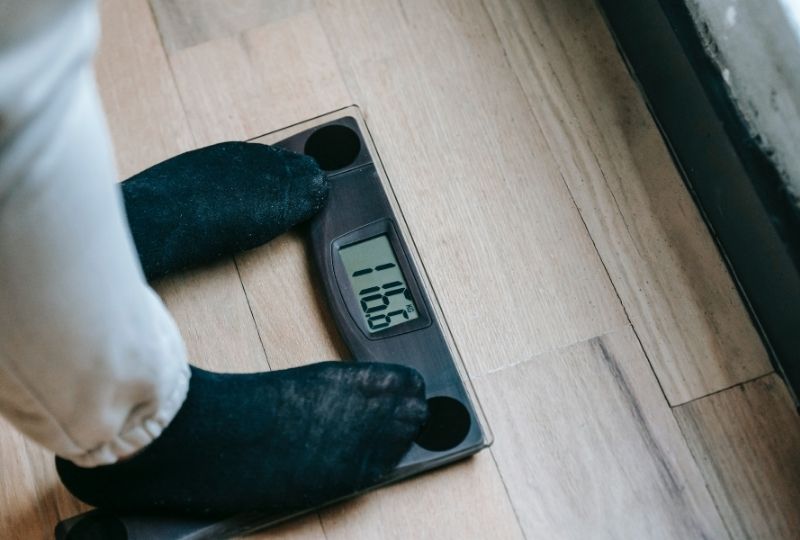
Getting ripped means more than just getting in shape. It requires more discipline, often for longer periods than just to lose a few pounds.
To ensure you’re always moving toward that end goal, it’s critical that you track and record your progress, both in the gym and in your chosen body metrics.
This means tracking workouts, from weight used to repetitions reached in every set, as well as time logged and calories burned in your cardio sessions.
In the kitchen, it means tracking your calories with an app like My Fitness Pal, scanning barcodes, and weighing portions when necessary.
This is necessary at least initially; if you eat the same thing every day you can get away with not tracking so vigorously – as long as the results keep coming.
Of course, tracking your weight, body fat, and potentially body circumferences is also a good idea to ensure your plan is working for you.
While tracking these metrics daily doesn’t guarantee progress every single day, it will reveal trends and let you know if and when tweaks are needed.
12. Keep consistent
The final step in the plan is the key to success in any area of life – consistency!
Once you find the dietary, training, recovery, and tracking approaches that get you results, the key is just to stick with it.
As mentioned, go for the slow and steady approach rather than throw everything at the wall to see what sticks.
Make small changes, track the results, and add new methods when you hit an inevitable plateau.
If you cut your diet to nothing and train three hours a day, you’ll lose weight fast, but you won’t keep it up for long.
Moderation in your plan will help with this consistency, as the combination of small changes along with seeing results will keep you going all the way.
When will you see weight loss?
Related: Leek Soup Diet
When undergoing a journey to getting ripped, the speed at which you see results will depend on your plan and your ability to stick to it.
If you follow the tips above to make yourself an effective plan and stick to it consistently, you’ll see progress very quickly.
If the combination of diet and exercise creates a calorie deficit of around 500 calories per day, you may see up to a pound a week of weight loss.
More aggressive programs may lead to quicker weight loss, but again, this may hinder your progress long-term and possibly lead to weight regain.
Keep in mind that competitive bodybuilders follow two to four-month cutting plans to get as lean as possible.
Don’t expect to start at 23% body fat and get ripped in a few weeks.
While seeing the number on the scale go down is great for motivation, the point isn’t how fast it happens.
Stick with your plan, make adjustments when needed, and the fat loss will be consistent over the long term.
When will you start to see muscle growth?
Related: How To Lose a Pound a Day
If you thought losing fat was hard, building new muscle tissue makes it look easy.
For newer lifters, the gains can come quicker, with studies showing three times the muscle growth in new trainees than their trained counterparts over a 21-week strength program.
Muscle growth will come from adequate stimulus and progression in the gym, as well as sufficient protein intake.
For more advanced lifters, a calorie surplus may be required to build more muscle, which will halt fat loss.
Keep in mind that as long as you maintain the muscle you have, you will appear more muscular as you lose body fat.
Again, stay consistent with your plan, and you will see visible changes in your physique in a matter of weeks.
Workout Plan to Get Ripped
Related: 4 day workout split
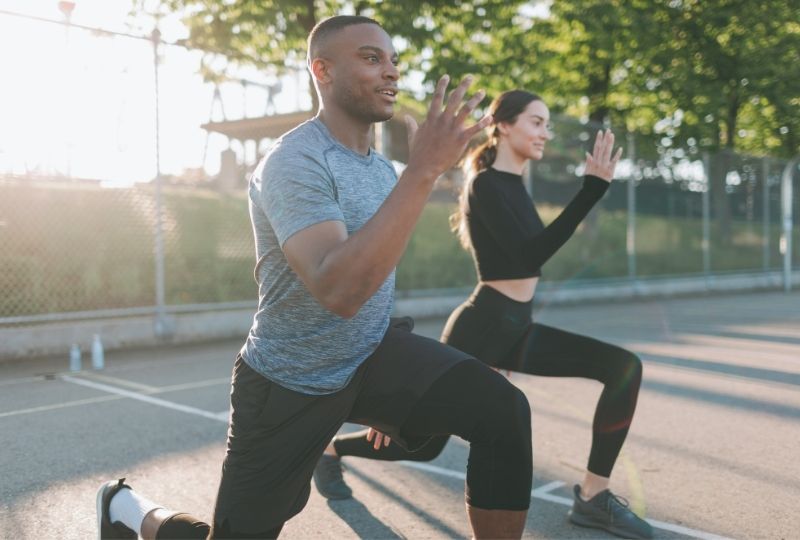
The following workouts are options for beginner to intermediate level.
They include a full-body session, which can be performed three times per week, and an upper/lower split for those who want to lift on four days.
Alternatively, see the example schedule for a combination of all three workout sessions.
The schedule also shows an example of a six-day cardio schedule, which would equate to about 25-50 minutes a day.
Full-Body Workout
| Exercise | Sets x Reps | Rest |
| Squat / Leg press | 3×8-12 | 1-2 min |
| Bench / Chest press | 3×8-12 | 1-2 min |
| Pull-up / Lat pulldown | 3×8-12 | 1 min |
| Walking lunges | 3×8-12 | 1 min |
| Machine / DB OH press | 3×8-12 | 1 min |
| Cable / One-arm row | 3×8-12 | 1 min |
| Decline / reverse crunch | 3xMAX | 30 sec |
Lower Body Workout
| Exercise | Sets x Reps | Rest |
| Squat / Leg press | 4×8-12 | 1-2 min |
| Romanian deadlift | 4×8-12 | 1 min |
| Bulgarian split squat | 4×8-12 | 1 min |
| Standing calf raise | 4×8-12 | 1 min |
| Weighted crunch | 4×8-12 | 30 sec |
Upper Body Workout
| Exercise | Sets x Reps | Rest |
| Bench / Chest press | 4×8-12 | 1-2 min |
| Pull-up / Lat pulldown | 4×8-12 | 1 min |
| Machine / DB OH press | 4×8-12 | 1 min |
| Cable / One-arm row | 4×8-12 | 1 min |
| Barbell curl | 4×8-12 | 1 min |
| Triceps extension | 4×8-12 | 1 min |
Weekly Schedule:
- Monday: Full-body workout + cardio
- Tuesday: Cardio
- Wednesday: Upper body workout + cardio
- Thursday: Cardio
- Friday: Lower body workout + cardio
- Saturday: Cardio
- Sunday: Rest
Bonus: Daily Get Ripped Checklist
Related: 4 Day Push Pull Workout Routine
Finally, we have a daily checklist you can use to ensure you get ripped in no time!
While checking every box every day would be amazing, just use this as a guide. Start slow and build up over time.
That being said, checking this complete list daily will guarantee you a one-way express ticket to Shredtown.
Good luck!
| Activity | Goal | Check |
| Overall calorie deficit | e.g. <1800 kcals | |
| Hit protein target | e.g. >150 grams | |
| Limited sugar / saturated fats | e.g. <50/20 grams | |
| Fruits and vegetables | e.g. 5 serves | |
| Sufficient hydration | e.g. 8 cups | |
| Weight training | e.g. Upper body | |
| Performed cardio | e.g. 40 mins | |
| Injury prevention | e.g. Stretches | |
| Adequate sleep | e.g. 8 hours | |
| Tracked body composition | e.g. Waist circumference |
Frequently asked questions
Related: How Many Exercises Per Workout?
Can I get ripped in 3 months?
It is definitely possible for someone to get to a ripped physique in this time span, although it depends on your starting point.
Obviously, for someone with considerable body fat to lose – or no muscle at all, it may take longer.
A good yardstick to aim for is 0.5-1 lb. of fat loss per week. If you have 6-12 lbs. to lose, there’s your answer!
Can I go from fat to ripped over 40 years old?
While losing weight has its own challenges as we age, there’s nothing stopping you from massively improving your physique at any stage of life.
The same tips from this article apply, no matter your age.
As mentioned, there may be different protein requirements and training considerations, but with the same planning and dedication, you can do it.
Can you get ripped in 4 weeks?
Again, it is technically possible, but you’d have to be pretty close to begin with.
An example might be someone who was already in incredible shape, who let themselves enjoy a holiday period with some extra food and beverages.
If such an individual gained a few pounds over the holidays, they could definitely get back to a ripped physique with a month of good diet and training.
For anyone with more weight to lose, it’s going to take a bit more time. But it will happen eventually!
Closing Thoughts
What do you think about our tips? We hope this article gave you some useful takeaways for getting ripped.
Let us know your best tips – and where you are on your journey – in the comments!
If you know anyone who is interested in getting shredded (who isn’t?) don’t forget to share this article with them.

